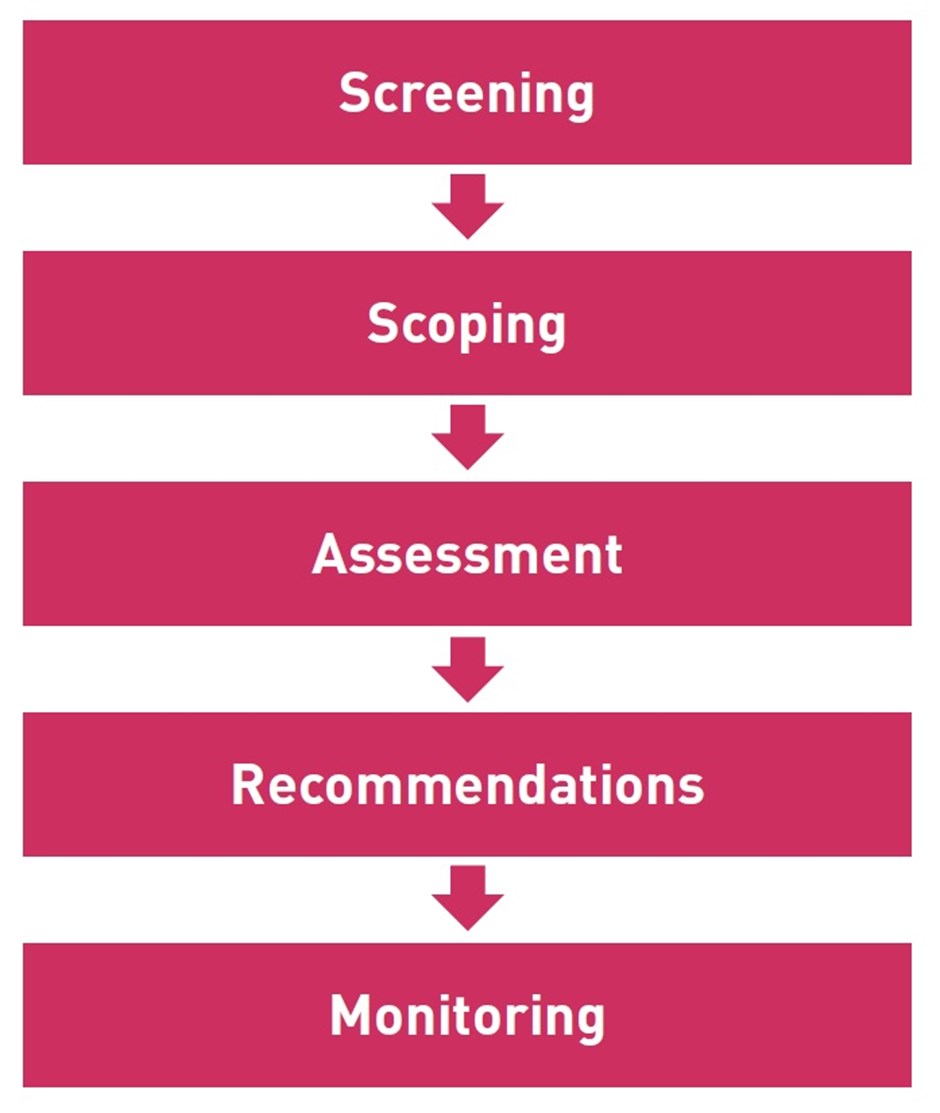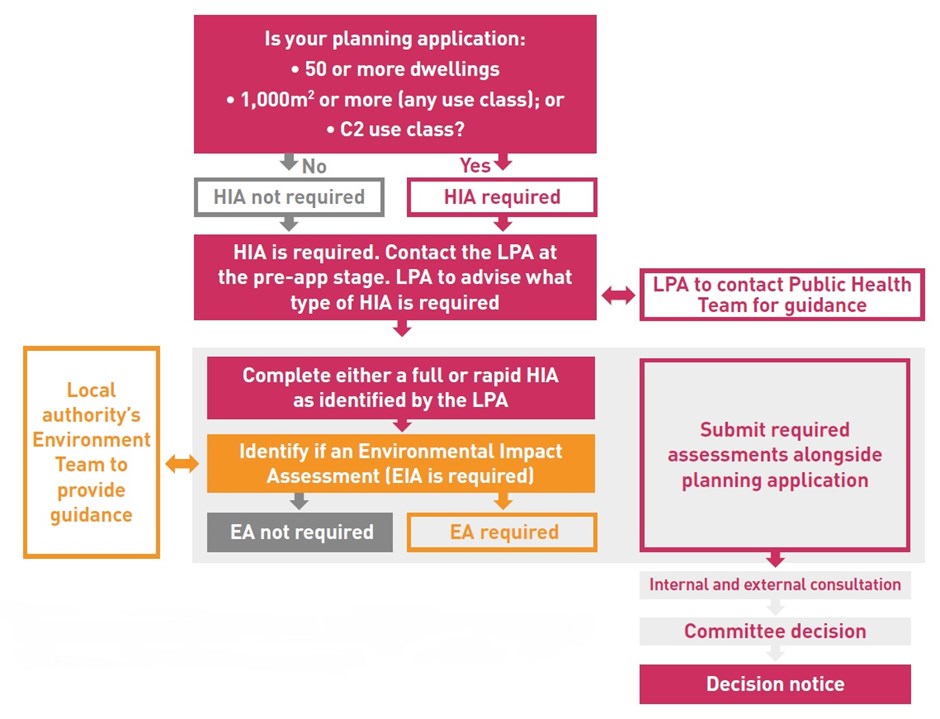Process & Method
There are differing types of HIA from desktop reviews through to comprehensive, full assessments. There is no national agreement as to which projects require which type of HIA.
However, for spatial planning related HIA, the Town and Country Planning Association has produced a table describing projects and the type of HIA they would recommend, which may be of use to those completing an HIA. Locally, EPOA have an agreement of when to do an HIA but check to ensure of local policy.
An HIA can be carried out before a project/programme/plan starts and this type is known as a prospective HIA. If it is carried out at the same time as the project/programme/plan, it is known as a concurrent HIA. If it is carried out after the project/programme/plan has finished it is known as a retrospective HIA. The WHIASU Health Impact Assessment Practice Guide proposes a retrospective HIA may be used as an evaluation tool58.
Types of HIA
Desktop - these are short reviews that can be completed in hours to days. There may be some small group engagement and data is from easily accessed sources. References should be made to local health strategies and policies.
Rapid - these are more detailed reviews that may take days to weeks. They are more detailed, require a more through engagement process and usually a literature review is included. As above, references should be made to local health strategies and policies. A steering group may be set up to support this type of HIA.
Full/ comprehensive - very detailed reviews that may last months. A full literature reviews usually support the evidence base. Often, they include longer consultation with multiple engagement events and may include data collection from new sources to further support the evidence base rather than using simply using existing sources. A steering group would be set up to support this type of HIA.
Process
HIA is a step process with recognised stages which are followed so to ensure that the assessment is robust. The below describes the stages:
Screening – a brief initial assessment of the plan/ programme/project proposal that identifies any potential impacts that may arise from it on the local population and on any identified groups within the population.
It allows early consideration of further work, specific groups and specific issues that need to be included and the type of HIA needed. It is not always a required step of the process especially where local policy identifies that HIA are deemed to be part of the planning process against agreed criteria.
Scoping – the next step in the HIA process allows decisions to be made around what the aims of the HIA are, the details of the processes that need to be undertaken to complete it and levels of information required. This may include looking at which specific elements need to be examined or which groups you need to consider.
Engagement with relevant parties on what needs to be considered as part of the assessment should be sought. Signposting to evidence sources that underpin the HIA can also be provided including relevant strategies and policies. It also provides an opportunity to scope out parts of the HIA that may not be applicable.
Assessment - at this step, an assessment is made as to the positive benefits of the proposal and allows the identification of any unintended consequences that may arise and should relate directly back to the scoping report. The identification of the impact on specific population groups should be included. Mitigation measures should be described as required including detail as to what and when these will be delivered.
Recommendations - these are the formal recommendations arising from the HIA and should relate back to the aims of the HIA from the scoping assessment. In Essex, the HIA must include recommendations as part of the summary of the HIA. This includes how to maximise the potential benefits as well as minimising unintended consequences that have been identified.
Monitoring - detail of how recommendations will be monitored and for what periodshould be included.
Page updated: 11/09/2019

